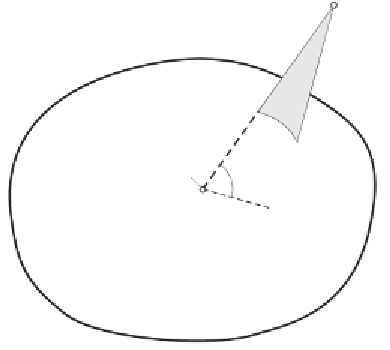Geoscience Reference
In-Depth Information
P
r
l
Ã
O
r'
dM
Fig. 2.9. Expansion into spherical harmonics
We now evaluate the coecients of this series. The gravitational potential
V
is given by the basic equation (1-12):
V
=
G
dM
l
,
(2-64)
earth
where we now denote the mass element by
dM
; the integral is extended over
the entire earth. Into this integral we substitute the expression (1-104):
=
∞
r
n
r
n
+1
P
n
(cos
ψ
)
,
1
l
(2-65)
n
=0
where the
P
n
are the conventional Legendre polynomials,
r
is the radius
vector of the fixed point
P
at which
V
is to be determined,
r
is the radius
vector of the variable mass element
dM
,and
ψ
is the angle between
r
and
r
(Fig. 2.9).
Since
r
is a constant with respect to the integration over the earth, it
can be taken out of the integral. Thus, we get
V
=
∞
r
n
+1
G
earth
1
r
n
P
n
(cos
ψ
)
dM .
(2-66)
n
=0
Writing this in the usual form as a series of solid spherical harmonics,
V
=
∞
Y
n
(
ϑ, λ
)
r
n
+1
,
(2-67)
n
=0










